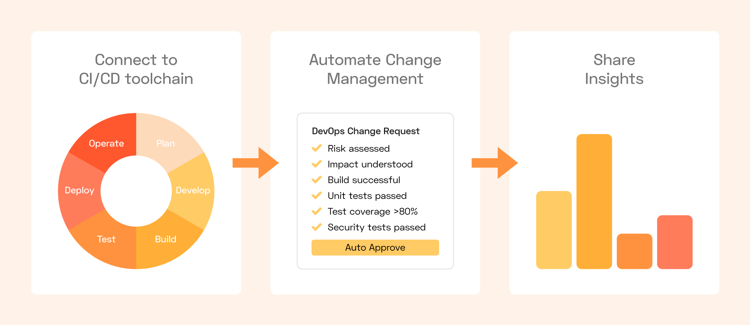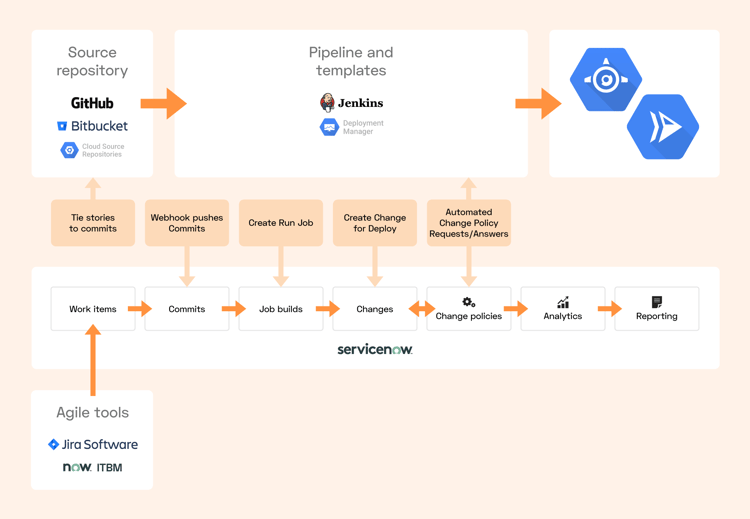In this first blogpost, I will try not to go into details on the terms DevOps and CI/CD pipeline, because even the global experts still have a slight deviation on how they describe the meaning of these two terms. But I will try to give you some more knowledge on these specific areas related to ServiceNow and Google.
To put it in short; DevOps is a set of best practices, to combine a better and more agile way of doing software development (Dev- part) and IT operations (Ops- part) in order to make the whole system development life cycle faster.
DevOps related to ServiceNow and Google
You might recognize ServiceNow as a Service Management Platform. ServiceNow is also, for many people, well known within the area of IT Service Management (ITSM). In the past couple of years, ServiceNow users (and ServiceNow itself) have started utilizing the ServiceNow platform capabilities on an enterprise level, meaning all parts of the organization where digital workflows, orchestration and single system of records are needed.

ServiceNow’s DevOps approach consists of three main topics:
- ServiceNow connects to DevOps tools and provides visibility for DevOps teams and for Service Management.
- ServiceNow enables efficient use of Change Management and related policies without decreasing the speed of DevOps.
- Everything done with ServiceNow can be measured and analyzed for use of Continual Improvement of processes and ways of working.
Example architecture

Several solutions and platforms offer the full set of tools and needed capabilities for DevOps in their portfolio, from start to end. Google isn’t any different in that sense. But what makes Google different, however in my view, is that their focus isn’t forcing you to use only their own tools, but rather giving other options or being the missing link between different tools. If you have an efficient model and you are used to using Jira for Agile development storing, Google lets you continue doing so. No need to change when using Google Cloud Platform (GCP), but developers tend to prefer Google SW development tools as part of their toolkit.
The same goes with ServiceNow. You don’t have to drop Jira, or other tools, to start using ServiceNow IT Business Management (ITBM) capabilities. You can choose to do that, but you can also just add ServiceNow as the integrating part of your CI/CD toolchain.
Example process for CI/CD pipeline

The process diagram above illustrates what roles and functions different tools have in a CI/CD pipeline process. This process starts from Jira and ends when a Production environment change ticket is created in ServiceNow. In this model, ServiceNow gathers the needed information of progress during the process, and therefore you can follow what is coming from the pipeline, what changes are in which stage and so on. All this without going through multiple tools which you need for combining the overall picture. Also the use of Change Management as part of this CI/CD pipeline allows mitigating risks of conflicts and situations where information gaps between different stakeholders may cause friction and unwanted outcomes.
What’s next in Part #2?
I hope you found this useful as an introduction. In my next blog post around opportunities in ServiceNow and Google, I will focus more on how traditional datacenter space and Google Cloud can be managed with the same processes, manners and tools in ServiceNow.
In the meantime, if you want to learn more about what the ServiceNow platform can help you with, please feel free to download the eBook Three common business challenges you can solve using the Now Platform
